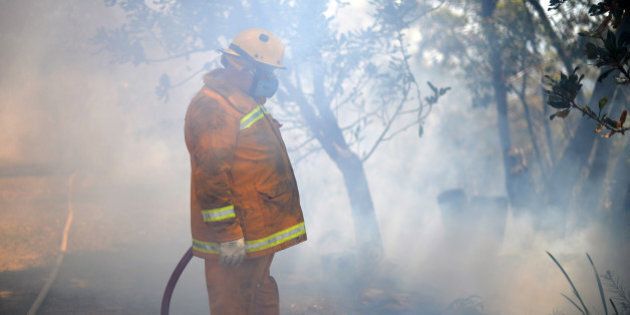
For the first time in Australia, a portable radar is being used to study severe fire weather -- enabling an exceptional look into the interaction of bushfires and the atmosphere.
Heading the study is PhD student at the University of Queensland, Nicholas McCarthy. He told The Huffington Post Australia there is already a strong body of literature relating to fire-atmosphere interaction. However, this is the first time a portable radar has been used in Australia to study severe fire weather.
"Portable radars, and field methods similar to mine, have been used for many years in the US to study things like tornadoes, but using it to study these fire-atmosphere coupled events represents a first for the technology we're using," McCarthy said.
McCarthy studies convective plumes, the stream of hot air rising into the atmosphere from bushfires. According to the researcher, the study of bushfire plumes is critical to fire spread models and has direct impacts of operational bushfire management.
"By focusing on observations of large bushfires, the study aims to present an unprecedented look inside the atmospheric dynamics of Australia's most devastating bushfire events," McCarthy said.
On a day of elevated fire danger, the team will go to a central position in the district with the most severe conditions and be on stand-by.
"Once the fire agency we are working with notifies us of the fire, we form a plan to stay safe in terms of the location we deploy to, including identifying an area with minimal risk and establishing evacuation routes," McCarthy said.
"We will then arrive and capture as many observations as possible using the radar, our weather stations and weather balloons in coordination with the significant emergency services response to these large events."
A timelapse documented by McCarthy and his team from the Mt Bolton fire north-west of Ballarat last month.
In the 2014-15 fire season, McCarthy and his colleagues worked mainly with the Bureau of Meteorology and Queensland Fire and Emergency Services to track events around Queensland.
In the 2015-16 season, the group widened their scope to include NSW and Victoria, with the help of the NSW Rural Fire Service and the Country Fire Authority in Victoria.
"We managed to get to two events in Victoria in the past month, which has really strengthened our methodology and already is showing some exciting results," McCarthy said.
"We are seeking to attend a number of prescribed burns this winter and autumn to build our sample size, and figure out how the meteorology of the big events compare to the smaller ones."
For Summer 2016-17, the team will have a "tried and proven approach" to stay safe in a bushfire while also collecting on-the-ground observations from large bushfires.
"Combined with our initial results from this season, we will hopefully be able to build a stronger understanding of these often devastating events using the observations collected on the ground, at the fires and in the field," McCarthy said.